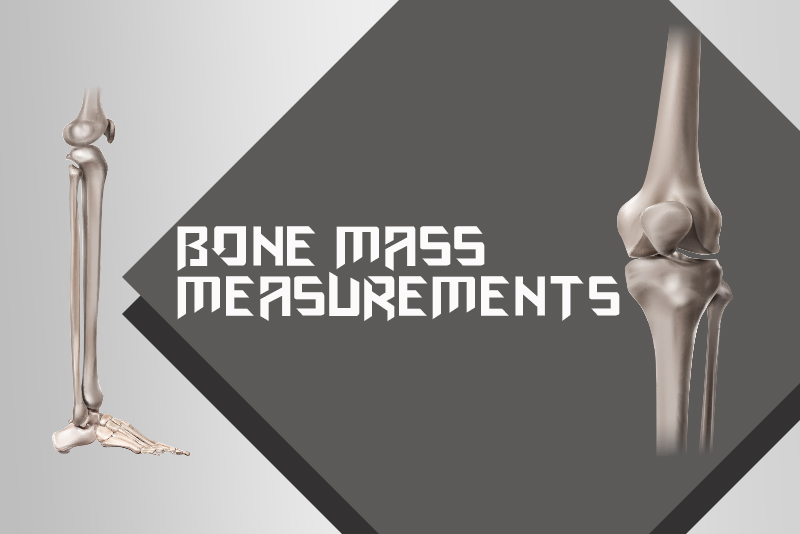Osteoporosis is a disease that causes bone loss, weakens the bones, and makes them prone to fractures. In the United States, an estimated 10 million people age 50 years and older have osteoporosis. Women are four times more likely to develop this bone disease than men. Early detection is important to enable early treatment to prevent fractures. Osteoporosis is diagnosed through bone mineral density (BMD) tests. Medical specialists treating people with osteoporosis can outsource medical billing to submit claims with the appropriate codes for BMD tests and treatments rendered.
Before we go into the coding and billing for the diagnostic tests and treatments, let’s take a brief look at the causes and symptoms of osteoporosis.
Causes and Symptoms of Osteoporosis – An Overview
The risk of osteoporosis increases with age. Up until about age 30, the body builds more bone than it loses. After age 35, bone breakdown increases at a faster rate than bone buildup, leading to a progressive loss of bone mass, without any pain or other symptoms. Women over the age of 50 or postmenopausal women have the highest risk of developing osteoporosis.
Typically, osteoporosis occurs without any symptoms. However, when your bones become weak due to the disease, you may notice the following signs and symptoms:
- Loss of height (by an inch or more).
- Postural changes (stooping or bending forward).
- Shortness of breath (caused by reduced lung capacity due to compressed disks)
- Bone fractures
- Lower back pain
Gender and age are the main risk factors for osteoporosis. Tracking bone health and density can help gauge a person’s risk of developing osteoporosis.
Bone Mass Density Measurement for Early Detection of Osteoporosis
A bone mineral density test is a diagnostic procedure that assesses bone mass as a major risk factor for fractures. It uses low levels of x-rays to measure the amount of calcium in the bones of the spine, hip or wrist. A BMD test can:
- detect osteoporosis
- determine the person’s risk for fractures, and
- measure the response to osteoporosis treatment
This quick, painless test is an easy and cost-effective method to diagnose osteoporosis. BMD test results are assigned a T-score based on a comparison with the bone density of a healthy young adult. A T-score between +1 and -1 is considered normal or healthy, while negative numbers indicate low BMD and high risk of fracture.
The National Institutes of Health (NIH) recommends preventive screenings for bone mineral density for the following people:
- all women over the age of 65
- women under the age of 65 who have a high risk of fracture
Coverage for Bone Mass Measurement
Here is some key information on Medicare coverage for BMD taken from Noridian’s website. Medicare provides coverage of bone mass measurements for a “qualified individual” who meets the following criteria:
- A woman who has been determined by the physician or qualified nonphysician practitioner treating her to be estrogen-deficient and at clinical risk for osteoporosis, based on her medical history and other findings.
- An individual with vertebral abnormalities as demonstrated by an X-ray to be indicative of osteoporosis, osteopenia, or vertebral fracture.
- An individual receiving (or expecting to receive) glucocorticoid (steroid) therapy equivalent to an average of 5.0 mg of prednisone, or greater, per day, for more than three months.
- An individual with primary hyperparathyroidism.
- An individual being monitored to assess the response to or efficacy of an FDA-approved osteoporosis drug therapy.
- BMD can be measured using a densitometer permanently located in an office and a mobile device or portable device transported from one site to another. Medicare’s bone mass measurement benefit includes a physician’s interpretation of the procedure’s results.
Other Criteria for Coverage
Medicare covers bone bass measurement screening once every two years (or more, if medically necessary) under the following conditions:
- The physician or qualified non-physician practitioner treating the qualified individual must provide an order for a bone mass measurement test, following an evaluation of the need for a bone mass measurement that included a determination of the medically appropriate measurement for the individual.
- The service must be a radiologic or radioisotopic procedure (or other procedure) meets the following requirements:
- Is performed with a bone densitometer (other than dual photon absorptiometry) or a bone sonometer (e.g., ultrasound) device approved or cleared for marketing by the FDA;
- Is performed for the purpose of identifying bone mass, detecting bone loss, or determining bone quality; and
- Includes a physician’s interpretation of the procedure’s results.
- A qualified supplier or provider must furnish such services under the appropriate level of supervision by a physician.
- The service must be reasonable and medically necessary to diagnose, treat, or monitor a qualified individual.
- The service must be performed at a frequency that conforms to the Frequency Requirements section.
CPT Codes for BMD
A Medicare article on local coverage policy L36460-Bone Mass Measurement lists 14 CPT/HCPCS codes (Group 1) for BMD:
76977 ultrasound bone density measurement and interpretation, peripheral site(s), any method
77078 computed tomography, bone mineral density study, 1 or more sites, axial skeleton (eg, hips, pelvis, spine)
77080 dual-energy x-ray absorptiometry (dxa), bone density study, 1 or more sites; axial skeleton (eg, hips, pelvis, spine)
77081 dual-energy x-ray absorptiometry (dxa), bone density study, 1 or more sites; appendicular skeleton (peripheral) (eg, radius, wrist, heel)
77085 dual-energy x-ray absorptiometry (dxa), bone density study, 1 or more sites; axial skeleton (eg, hips, pelvis, spine), including vertebral fracture assessment
78350 bone density (bone mineral content) study, 1 or more sites; single photon absorptiometry
78351 bone density (bone mineral content) study, 1 or more sites; dual photon absorptiometry, 1 or more sites
g0130 single energy x-ray absorptiometry (sexa) bone density study, one or more sites; appendicular skeleton (peripheral) (e.g., radius, wrist, heel)
0508t pulse-echo ultrasound bone density measurement resulting in indicator of axial bone mineral density, tibia
0554t bone strength and fracture risk using finite element analysis of functional data and bone-mineral density utilizing data from a computed tomography scan; retrieval and transmission of the scan data, assessment of bone strength and fracture risk and bone-mineral density, interpretation and report
0555t bone strength and fracture risk using finite element analysis of functional data and bone-mineral density utilizing data from a computed tomography scan; retrieval and transmission of the scan data
0556t bone strength and fracture risk using finite element analysis of functional data and bone-mineral density utilizing data from a computed tomography scan; assessment of bone strength and fracture risk and bone-mineral density
0557t bone strength and fracture risk using finite element analysis of functional data and bone-mineral density utilizing data from a computed tomography scan; interpretation and report
0558t computed tomography scan taken for the purpose of biomechanical computed tomography analysis
ICD-10 Codes to Support Medical Necessity
To support medical necessity, claims must also include the relevant ICD-10 codes to the highest level of specificity. A few examples of these ICD-10 codes are:
E21.0 Primary hyperparathyroidism
E24.0 Pituitary-dependent Cushing’s disease
E28.310 Symptomatic premature menopause
E34.2 Ectopic hormone secretion, not elsewhere classified
E89.40 – E89.41 Asymptomatic postprocedural ovarian failure – Symptomatic postprocedural ovarian failure
M48.50XA Collapsed vertebra, not elsewhere classified, site unspecified, initial encounter for fracture
M80.08XA Age-related osteoporosis with current pathological fracture, vertebra(e), initial encounter for fracture
M84.58XA Pathological fracture in neoplastic disease, other specified site, initial encounter for fracture
M85.822 Other specified disorders of bone density and structure, left upper arm
M85.851 Other specified disorders of bone density and structure, right thigh
M85.89 Other specified disorders of bone density and structure, multiple sites
S12.001A Unspecified nondisplaced fracture of first cervical vertebra, initial encounter for closed fracture
S12.02XA Unstable burst fracture of first cervical vertebra, initial encounter for closed fracture
S32.120B Nondisplaced Zone II fracture of sacrum, initial encounter for open fracture
S32.131A Minimally displaced Zone III fracture of sacrum, initial encounter for closed fracture
Osteoporosis is a preventable and treatable disease. Treatment recommendations are often based the risk of bone fracture in the next 10 years using bone density test measurements and other information. When the risk for fracture in not high, treatment may be targeted at modifying risk factors for bone loss and falls.
Osteoporosis accounts for more than two million fractures each year, and this number continues to grow. As physicians focus on diagnosing and treating the condition, they can rely on medical coding services to bill for their services and receive appropriate reimbursement. Meeting documentation requirements is crucial when submitting medical claims.




